Sodium-retaining effect of insulin in diabetes
- PMID: 23034715
- PMCID: PMC3533616
- DOI: 10.1152/ajpregu.00390.2012
Sodium-retaining effect of insulin in diabetes
Abstract
Insulin has long been hypothesized to cause sodium retention, potentially of enough magnitude to contribute to hypertension in obesity, metabolic syndrome, and Type II diabetes. There is an abundance of supportive evidence from correlational analyses in humans, acute insulin infusion studies in humans and animals, and chronic insulin infusion studies in rats. However, the absence of hypertension in human insulinoma patients, and negative results for sodium-retaining or blood pressure effects of chronic insulin infusion in a whole series of dog studies, strongly refute the insulin hypothesis. We recently questioned whether the euglycemic, hyperinsulinemia model used for most insulin infusion studies, including the previous chronic dog studies, was the most appropriate model to test the renal actions of insulin in obesity, metabolic syndrome, and Type II diabetes. In those circumstances, hyperinsulinemia coexists with hyperglycemia. Therefore, we tested the sodium-retaining effect of insulin in chronically instrumented, alloxan-treated diabetic dogs. We used 24 h/day intravenous insulin infusion to regulate plasma insulin concentration. Induction of diabetes (∼400 mg/dl) caused sustained natriuresis and diuresis. However, if we clamped insulin at baseline, control levels, i.e., prevented it from decreasing, then the sustained natriuresis and diuresis were completely reversed, despite the same level of hyperglycemia. We also found that 24 h/day intrarenal insulin infusion had the same effect in diabetic dogs but had no sodium-retaining action in normal dogs. This new evidence that insulin has a sodium-retaining effect during hyperglycemia may have implications for maintaining sodium balance in uncontrolled Type II diabetes.
Figures
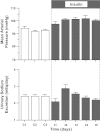
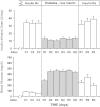
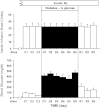
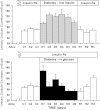
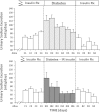


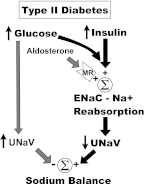
References
-
- Ahmed MI, Calhoun DA. Resistant hypertension: bad and getting worse. Hypertension 57: 1045–1046, 2011 - PubMed
Publication types
MeSH terms
Substances
Grants and funding
LinkOut - more resources
Full Text Sources
Medical

